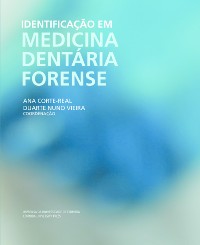Please use this identifier to cite or link to this item:
https://hdl.handle.net/10316.2/38479| DC Field | Value | Language |
|---|---|---|
| dc.contributor.author | Corte-Real, Ana | |
| dc.contributor.author | Porto, Maria João | |
| dc.date.accessioned | 2016-01-25T16:21:35Z | |
| dc.date.accessioned | 2020-09-09T10:14:07Z | - |
| dc.date.available | 2016-01-25T16:21:35Z | |
| dc.date.available | 2020-09-09T10:14:07Z | - |
| dc.date.issued | 2015 | - |
| dc.identifier.isbn | 978-989-26-0083-3 | |
| dc.identifier.isbn | 978-989-26-0963-8 (PDF) | |
| dc.identifier.uri | https://hdl.handle.net/10316.2/38479 | - |
| dc.description.abstract | Taking into account environmental factors inherent to the forensic reality, the tooth is an appropriate material for DNA analysis. The aim of this chapter is to enhance that by its histo morpho-functional characteristics, the DNA is located in the tooth as the “fly in amber”. Dentin, which is included in pulp-dentin complex and the cellular elements of dental cementum found in dentin matrix, maintain their integrity in relation to aggressions from the external environment. This is particularly important when we are dealing with biological remains with a high degree of cadaverous decay, unviable for genetic identification. The success of genotyping from the tooth comprises a distinct stage of sample preparation and selection of polymorphisms with greater discrimination power. | eng |
| dc.description.abstract | A peça dentária é um material de análise do ADN, tendo em conta os fatores ambientais inerentes da realidade forense. Pretende-se com este capítulo salientar que, pelas suas características morfo-histo-funcionais, o ADN está localizado no dente como o “mosquito no âmbar”. A dentina integrada no complexo dentino-pulpar e os elementos celulares do cemento dentário encontrados na matriz dentinária, mantêm a sua integridade em relação às agressões do meio exterior, nomeadamente quando estamos perante vestígios biológicos com um elevado grau de degradação cadavérica, inviáveis para a identificação genética. O sucesso da genotipagem a partir do dente compreende a etapa diferenciada de preparação da amostra e a de escolha dos polimorfismos com maior poder de discriminação. | por |
| dc.language.iso | por | - |
| dc.publisher | Imprensa da Universidade de Coimbra | por |
| dc.relation.ispartof | http://hdl.handle.net/10316.2/36707 | por |
| dc.rights | open access | - |
| dc.subject | positive identification | eng |
| dc.subject | discrimination | eng |
| dc.subject | genotyping | eng |
| dc.subject | identificação positiva | por |
| dc.subject | discriminação | por |
| dc.subject | genotipagem | por |
| dc.title | Identificação genética | por |
| dc.type | bookPart | por |
| uc.publication.firstPage | 147 | - |
| uc.publication.lastPage | 158 | - |
| uc.publication.location | Coimbra | por |
| dc.identifier.doi | 10.14195/978-989-26-0963-8_8 | - |
| uc.publication.digCollection | PB | por |
| uc.publication.orderno | 7 | - |
| uc.publication.area | Ciências da Saúde | por |
| uc.publication.bookTitle | Identificação em Medicina Dentária Forense | - |
| uc.publication.manifest | https://dl.uc.pt/json/iiif/10316.2/38479/208482/manifest?manifest=/json/iiif/10316.2/38479/208482/manifest | - |
| uc.publication.thumbnail | https://dl.uc.pt/retrieve/11139332 | - |
| uc.publication.parentItemId | 54520 | - |
| uc.itemId | 69731 | - |
| item.fulltext | With Fulltext | - |
| item.grantfulltext | open | - |
| Appears in Collections: | Identificação em Medicina Dentária Forense | |
Files in This Item:
| File | Description | Size | Format | |
|---|---|---|---|---|
| identifica__o_gen_tica.pdf | 1.08 MB | Adobe PDF |  |
Items in DSpace are protected by copyright, with all rights reserved, unless otherwise indicated.
